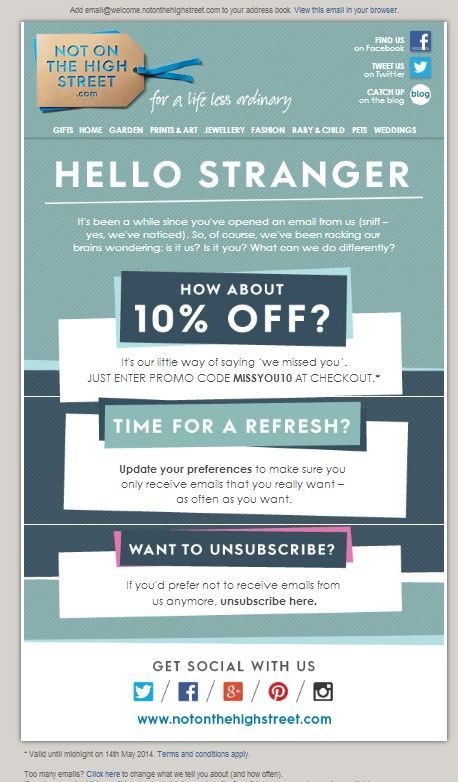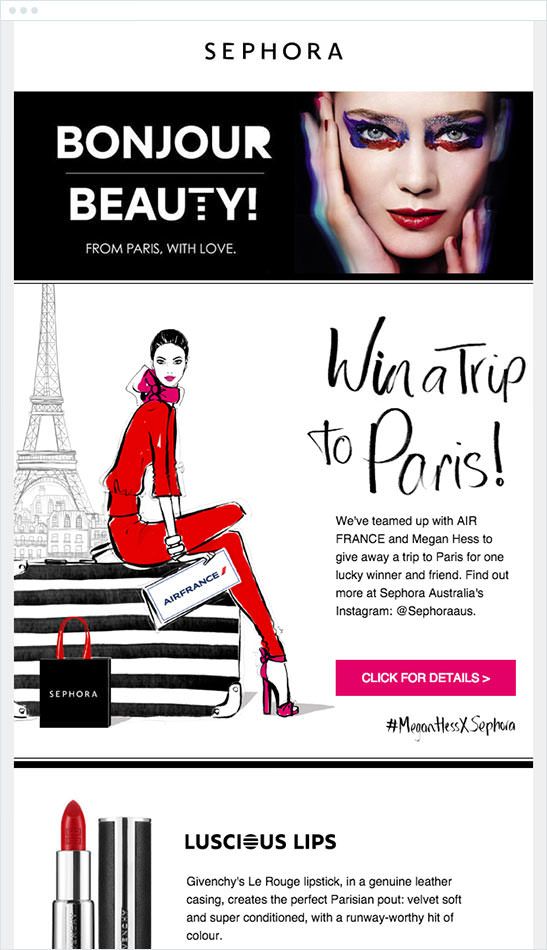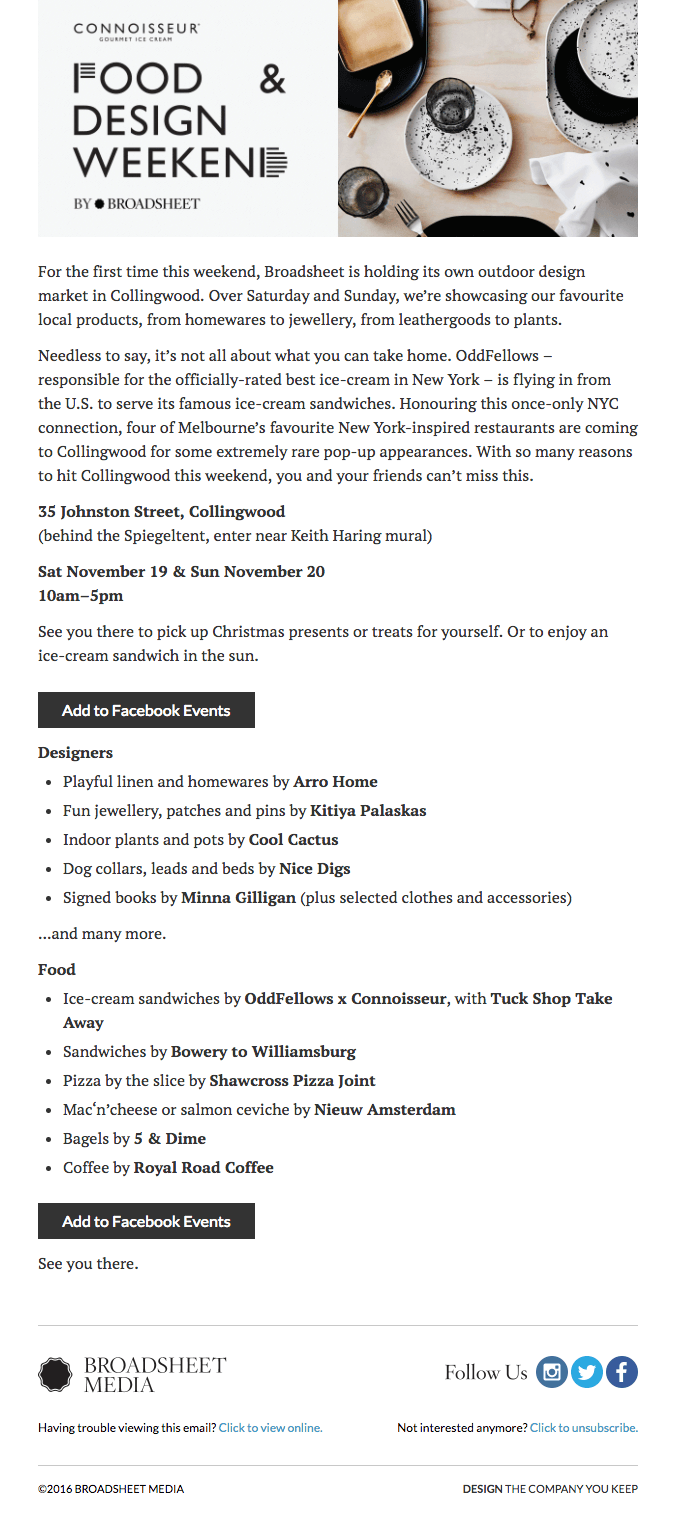How to increase your Facebook likes using email newsletters
As a marketer, you probably already know that email marketing comes with a much higher ROI than that of social media advertising.
But that doesn’t mean you should ditch your social media efforts completely. In fact, using it to supplement your other existing strategies is one of the best ways to maximize social media. No one is saying you need to set aside a huge chunk of your marketing budget for targeted Facebook posts, but it’s still important for brands—especially local brands— to have some kind of valuable Facebook presence.
The key is to integrate your social media efforts with your email marketing strategy. This ensures that you cover all your bases without stretching yourself too thin.
This post will explain how to properly insert a Facebook like button in email campaigns, as well as other tips for encouraging Facebook likes by integrating your strategy. We’ll also provide some examples of campaigns that got it right to help you understand how to create a Facebook like button for email.
Why should you integrate social media with a Facebook like button in email campaigns?
It’s always a good idea to put your subscribers first, right? You want to deliver relevant and valuable content to them at all times. It’s good for them, for you, and for the brands you represent.
Google found that leading companies were 1.5 times more likely to employ an integrated marketing strategy.
Why? Well, it relies on data-driven solutions to provide your subscribers with personalized content. In fact, research from Google also found that 61% of consumers expect brands to provide them with personalized content based on their preferences.
Despite these facts, less than 40% of businesses are using data and research about their audiences to arrive at decisions.
This gives you an opportunity to stand out from competitors, simply by adding a Facebook like button in emails and capitalizing on other integration methods like merging data from your company app or hosting webinars.
As an email marketer, you don’t have to resort to bombarding your subscribers with the same email campaign over and over. In fact, you don’t even have to throw dozens of emails at them every week. You simply need to send emails with quality content as part of an integrated marketing strategy.
Adding a Facebook like button in your emails is the first step.
Think past the like button
Facebook is an excellent place to start because the platform provides marketers with so many additional tools for reaching their audience with relevant and valuable traffic.
Plus, it’s hard to ignore the hard fact that over one billion people actively use Facebook with the platform boasting 1.49 billion active users every day. To put that into perspective, Gmail has over one billion active users each month.
Create a Facebook like button for email
Most email service providers make it easy for you to insert a Facebook like button in email campaigns. For example, you can include social share links at the bottom of every email you send.
But that only goes so far. You don’t want readers to just know that your Facebook page exists, you want them to take real action.
A good way to accomplish this is to create a Facebook like button for email with easy-to-use graphic design tools like Canva. Then you can insert them with an attached hyperlink into your email campaign templates. Your email service provider might also offer templates for social media that make it easy to integrate your newsletter and social media marketing efforts.
Create unique images and use some of the tips below to encourage readers to actually click the button and visit your Facebook page. Just saying “Like our page” probably won’t inspire them to follow through with it, but offering valuable content will.
This email from Not on the High Street highlights their social share buttons at the bottom to encourage engagement.

Add Facebook posts to your email newsletters
Templates from your email service provider should also make it easy for you to embed your best Facebook posts directly into your emails.
This is a great way to show subscribers what you’re up to on other channels. Grab some posts of your recent promotions and specials or a blog you’re really proud of.
By segmenting your audience, you can select Facebook posts that are the most relevant to different subscribers. It’s like using the Facebook audience insights tool, but more likely to deliver results because you’re targeting audience members through email where they’re in control.
This email from Broadsheet doesn’t embed a Facebook post into the email, but instead it includes a link to RSVP to the event directly on Facebook to encourage social engagement.
Image Source: Really Good Emails
Form a private Facebook group exclusively for email subscribers
Most marketers have noticed by now that the Facebook algorithm stopped working in favor of brands—specifically small businesses—a long time ago. Now, the omnipresent Facebook gods display more posts from paid advertising, family members, friends, and groups.
That last part is important for marketers because it provides a way for you to essentially beat the algorithm by engaging with your subscribers through groups.
Start by sending out a newsletter encouraging subscribers to join a private Facebook group. But don’t forget to provide some incentive: let them know you’ll offer special deals there and they’ll have the opportunity to provide feedback about your products or services.
This makes a great tactic for customer retention too. It’s hard to beat one-on-one interaction with real customers who can provide you with detailed feedback. Plus, inviting customers to something “exclusive” is always enticing and makes them feel truly valued.
Hold a contest for subscribers who follow your page
When done correctly, Facebook contests provide a stellar medium to engage your audience and develop brand awareness. The key is to know what type of contest will hit with your audience and which type will flop.
Here are a few ideas:
-
Photos: Ask subscribers to take a photo that relates to your branding and submit it on the Facebook page.
-
User-generated content: Ask for recipes, product suggestions, enhancements, or unique ways subscribers use your product.
-
Keep it simple: Ask subscribers to like your page and submit their email (so you can keep track of entries).
If possible, try to keep the prizes brand-related. Gift cards and free products always work well, or offering a unique VIP experience provided by your company could also be an option to consider. Sephora recently ran a contest for a trip to Paris. Not only are they offering a great prize, but it also encourages subscribers to interact with their social media platforms.

Encourage subscribers to rate your business on your Facebook page
Giving out any kind of incentive for Google or Facebook ratings is risky business, so it’s probably best to avoid discounts or free products entirely.
There’s no harm, however, in simply asking your subscribers to let the public know what they think about your brand with a rating. Send out an email campaign with a custom image that links to your Facebook review page.
And of course, don’t forget to include a Facebook like button in the email, too.
Test and repurpose content on each platform
Thanks to its versatile posting options, Facebook makes the perfect medium for testing or repurposing your email content.
Did an email campaign perform well? Maybe that content is also worth a sponsored Facebook post. Facebook makes it easy to transition emails into posts with different templates to highlight products, images, text, links, and plenty of other unique calls to action.
Wrap up
If you’re planning to insert a Facebook like button in email campaigns, that’s a great first step to boosting your Facebook likes and engagement. A strategy that integrates social media, email campaigns, and other methods is important because that’s how your audience wants to interact with brands.
With just over a third of consumers getting the integration they crave from brands, this gives you plenty of chances to stand out from competitors with your tactics. And, the more you give customers what they want, the more they will embrace your brand.
MOST RECENT ARTICLES
Want to engage your audience and grow your brand? Try Emma's robust easy-to-use product today.














